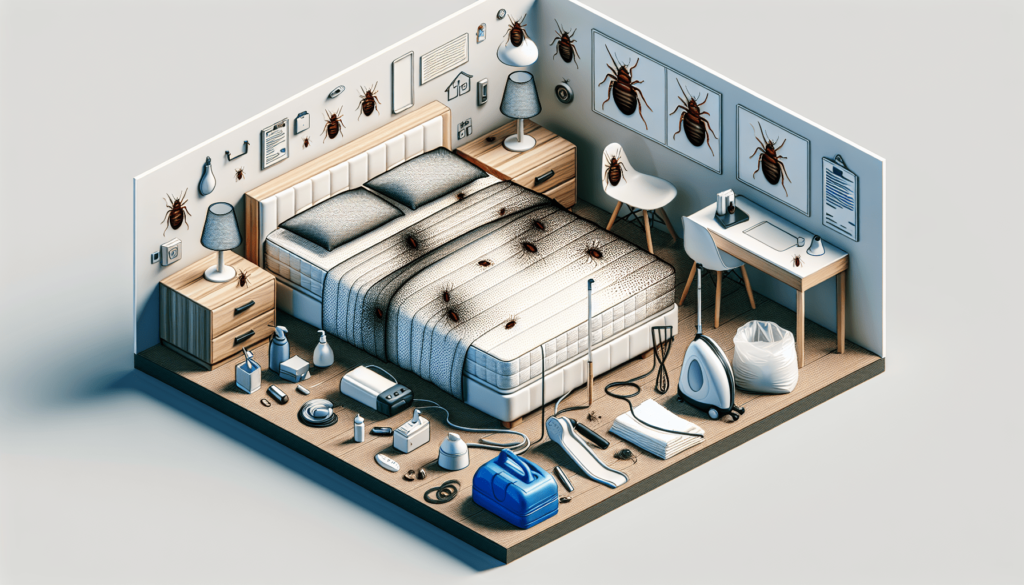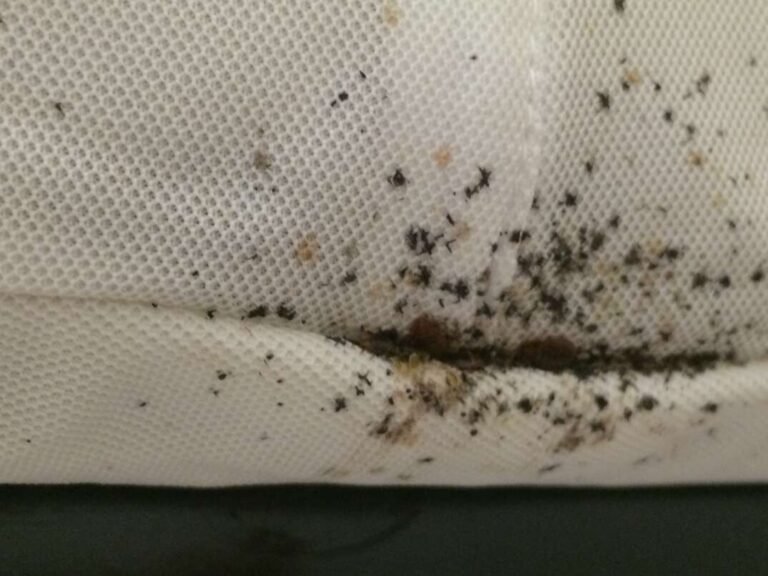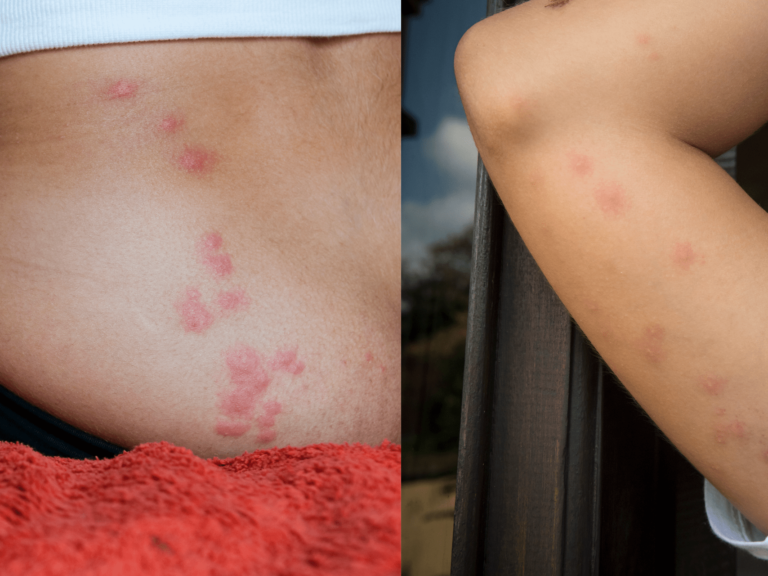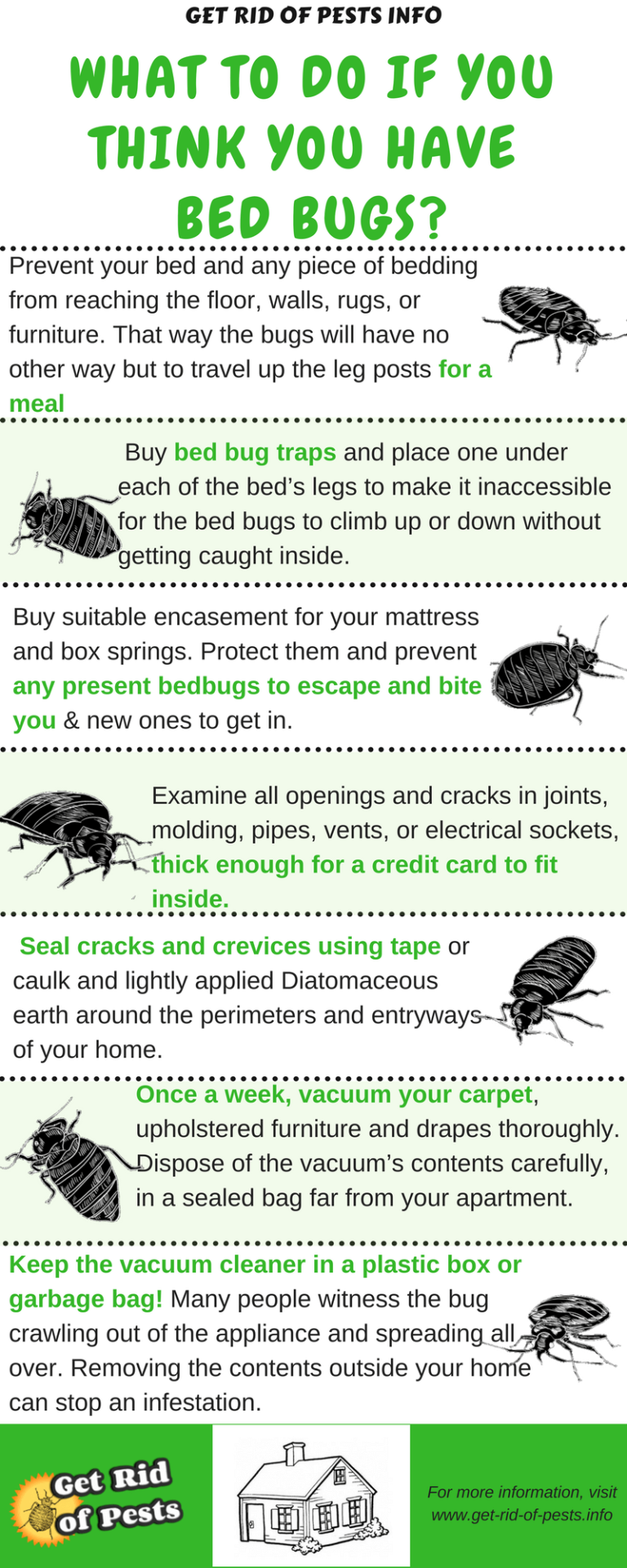What to Do When You Encounter Bed Bugs
If you happen to encounter bed bugs in your home or while traveling, it is important to act swiftly and effectively. Bed bugs are notorious for their ability to infest various spaces and cause discomfort, both physically and mentally. In this article, we will explore comprehensive strategies and steps to address a bed bug infestation, drawing from a wealth of expert knowledge and real-life experiences. By following the guidance provided, you will gain valuable insights on how to identify, treat, and prevent bed bugs, ultimately ensuring a peaceful and bed bug-free environment.
Identifying Bed Bugs
Bed bugs are small, reddish-brown insects that are notorious for infesting homes and causing significant discomfort. It is essential to be able to identify these pests to take appropriate action. Here are some distinguishing features of bed bugs:
Distinguishing features of bed bugs
- Size: Adult bed bugs are typically about the size of an apple seed, roughly 5-7 millimeters in length. They are flat, oval-shaped, and have a reddish-brown color.
- Body Structure: Bed bugs have six legs, two antennae, and a segmented body. They do not have wings.
- Color: While bed bugs are mainly reddish-brown, they can appear darker or lighter depending on when they last fed on blood.
- Bed Bug Life Stages: Bed bugs go through five nymph stages before reaching adulthood. Nymphs are smaller and lighter in color compared to adult bed bugs.
Common areas where bed bugs hide
Bed bugs are adept at hiding in various places within your home. Here are some common areas where they may hide:
- Mattresses and Box Springs: Bed bugs find their way into the seams, folds, and tags of mattresses and box springs. They are attracted to the warmth and carbon dioxide emitted by humans.
- Furniture and Upholstery: Bed bugs can hide in cracks, crevices, and upholstered furniture, such as sofas and chairs.
- Bedding and Linens: Sheets, pillowcases, and blankets provide ideal hiding spots for bed bugs.
- Carpets and Rugs: Bed bugs may be found in the edges of carpets, along baseboards, and in the seams of rugs.
- Wall and Ceiling Cracks: These insects can also seek shelter in cracks and crevices in walls and ceilings.
- Luggage and Personal Belongings: Bed bugs can hitch a ride on your luggage or items that have been in infested areas.
Signs of bed bug infestation
Knowing how to spot signs of a bed bug infestation can help you take immediate action. Look out for the following indicators:
- Bites: Bed bug bites usually appear as itchy, red welts on exposed areas of the body, such as the face, neck, arms, and legs.
- Bloodstains on Sheets: If you wake up to small bloodstains on your bed sheets, it could be a sign that bed bugs have been feeding.
- Rusty Stains: Dark-colored, rusty stains on sheets, mattresses, or furniture may indicate bed bug excrement.
- Musty Odor: A musty, sweet odor, often likened to the scent of raspberries, may be present in heavily infested areas.
If you notice any of these signs, it is crucial to take immediate action to prevent the infestation from spreading further.
Initial Response
Discovering bed bugs can be distressing, but it is crucial to remain calm and take immediate action to address the situation effectively. Here are some recommended steps to take:
Calm and immediate actions
- Isolate infested areas: Start by limiting the movement of infested items to prevent bed bugs from spreading to other areas of your home.
- Wash and dry infested items: Launder all clothing, bedding, and fabric items on high heat to kill any bed bugs and their eggs.
- Vacuum: Thoroughly vacuum all infested areas, including mattresses, carpets, and furniture. Use a brush attachment to dislodge bed bugs and their eggs.
- Seal and discard: Seal infested items in plastic bags before disposing of them to prevent further infestation.
- Reduce clutter: Decluttering your living space will minimize potential hiding spots for bed bugs.
Avoiding common mistakes and panic responses
It is natural to feel overwhelmed when dealing with a bed bug infestation, but it is important to avoid certain actions that can worsen the situation:
- Don’t panic: Panicking can lead to irrational decisions that may exacerbate the infestation.
- Don’t use DIY insecticides: Over-the-counter insecticides can be ineffective and pose health risks if used improperly.
- Don’t move to another room: Simply relocating to another room or area will not solve the problem, as bed bugs can easily follow you.
- Don’t neglect professional assistance: If the infestation persists or spreads, it is essential to contact professional pest control experts.
Contacting professionals if necessary
While DIY methods can be effective for minor infestations, severe cases often require the expertise of professional exterminators. Here are situations that warrant contacting professionals:
- Recurring infestations: If bed bugs keep reappearing despite your best efforts to eliminate them, professional treatment may be necessary.
- Large-scale infestations: Extensive infestations that have spread throughout your home may be too challenging to handle on your own.
- Highly sensitive environments: If you or someone in your household has health conditions that require extra caution, professionals can ensure safe and effective treatment methods.
Contacting professional exterminators can provide the expertise and resources needed to eradicate bed bugs effectively.

This image is property of pixabay.com.
DIY Bed Bug Treatment
While professional assistance may be required for severe infestations, there are several efficient home remedies you can try for smaller infestations. Here are some DIY methods to get rid of bed bugs:
Efficient home remedies to get rid of bed bugs
- Washing and drying: Launder infested clothing, bedding, and fabrics on high heat. The heat will kill bed bugs and their eggs.
- Steam treatment: Steaming infested areas and items can effectively kill bed bugs by exposing them to high temperatures.
- Natural insecticides: Certain natural products, such as diatomaceous earth or essential oils, can help repel and kill bed bugs.
- Freezing: If possible, sealing infested items in plastic bags and placing them in a freezer for several days can eliminate bed bugs.
- Silica gel or baking soda: Applying silica gel or baking soda to infested areas can dehydrate and kill bed bugs.
Using vacuum for bed bug removal
Regular vacuuming can be an essential part of bed bug control. Follow these steps to effectively vacuum infested areas:
- Choose a vacuum with a HEPA filter: HEPA filters trap small particles like bed bugs and their eggs, preventing them from re-entering your living space.
- Vacuum thoroughly: Concentrate on areas where bed bugs are likely to hide, such as mattress seams, box springs, furniture joints, and carpet edges.
- Dispose of vacuum contents: After vacuuming, seal the contents in a plastic bag and discard it immediately to prevent re-infestation.
Vacuuming alone may not completely eliminate a bed bug infestation, but it can help reduce their numbers and remove live bugs and eggs.
Heat treatment method
Heat treatment is an effective way to kill bed bugs and their eggs. Here’s how to implement heat treatment:
- Wash and dry infested items: Launder infested clothing, bedding, and fabrics on high heat to kill bed bugs.
- Heat infested areas: Use steamers or specialized bed bug heaters to expose infested areas, such as mattresses and furniture, to high temperatures. Ensure the heat penetrates deep into crevices and seams.
- Monitor and repeat: Regularly monitor infested areas and repeat the heat treatment process if necessary to eliminate any surviving bed bugs.
While heat treatment can be an efficient DIY method, it is crucial to follow safety guidelines and consult professional advice if needed.
Professional Bed Bug Treatment
In certain instances, professional assistance is necessary to tackle a bed bug infestation effectively. Here’s when you should consider calling a professional exterminator:
When to call a professional exterminator
- Severe infestations: Extensive infestations that have spread throughout your home may require expertise and tools that only professionals possess.
- Structural infestations: Bed bugs can hide deep within walls, floorboards, and other hidden areas that are difficult to access without professional help.
- Limited success with DIY methods: If your DIY efforts have not resolved the infestation, professional intervention may be necessary to eliminate the bed bugs completely.
Understanding the process of professional bed bug treatment
Professional bed bug treatment typically involves several steps:
- Inspection: Trained technicians will thoroughly inspect your home to identify the extent of the infestation and locate hiding spots.
- Treatment plan: Based on the inspection results, professionals will develop a customized treatment plan to effectively eliminate the bed bugs.
- Chemical or non-chemical treatment: Professionals may use a combination of chemical treatments, heat treatments, and other techniques tailored to your specific situation.
- Monitoring and follow-up: Professionals will monitor the effectiveness of the treatment and provide follow-up visits if necessary to ensure complete eradication.
Costs associated with professional bed bug treatment
The cost of professional bed bug treatment can vary depending on factors such as the severity of the infestation, the size of your home, and the chosen treatment method. It is advisable to obtain multiple quotes from reputable pest control companies to compare costs and services.
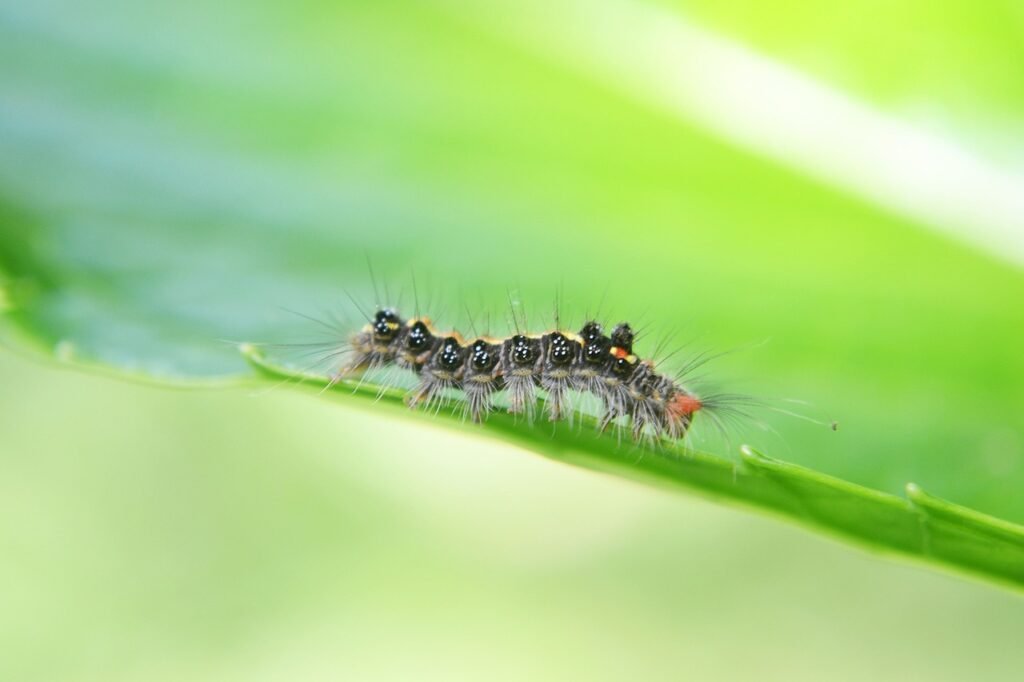
This image is property of pixabay.com.
Preventive Measures
Prevention is key when it comes to bed bugs. By taking proactive measures, you can minimize the risk of infestation. Here are some preventive measures to consider:
Regularly cleaning and decluttering your home
- Vacuum regularly: Vacuum carpets, rugs, and furniture regularly to remove any potential hiding spots for bed bugs.
- Wash and dry bedding and clothing: Launder your bedding, clothing, and other fabric items on high heat regularly to kill any bed bugs or eggs.
- Reduce clutter: Clutter provides hiding places for bed bugs, so keep your living space organized and free of unnecessary items.
Using bed bug covers
- Encase mattresses and box springs: Use bed bug-proof mattress and box spring encasements to prevent bed bugs from infesting these areas and make it easier to detect them.
Tips for preventing bed bug infestations in the future
- Inspect second-hand items: Carefully inspect any used furniture, clothing, or other items for signs of bed bugs before bringing them into your home.
- Avoid picking up items from the street: Discarded furniture or items found on the street may be infested with bed bugs, so it’s best to avoid bringing them home.
- Be cautious when traveling: Inspect hotel rooms for signs of bed bugs and keep your luggage away from beds and upholstered furniture.
By following these preventive measures, you can significantly reduce the risk of a bed bug infestation in your home.
Bed Bugs and Health
Bed bugs not only cause physical discomfort but can also have an impact on your mental well-being. Here are the health implications of bed bug infestations:
Physical health impacts of bed bug bites
- Itchy skin reactions: Bed bug bites can cause itchy welts or rashes, leading to intense discomfort and potential skin infections due to scratching.
- Allergic reactions: Some individuals may experience allergic reactions to bed bug bites, which can result in severe itching, swelling, and difficulty breathing in rare cases.
- Secondary infections: Excessive scratching of bed bug bites can lead to open sores, increasing the risk of secondary bacterial infections.
Psychological health impacts of bed bug infestations
- Stress and anxiety: The presence of bed bugs can cause significant psychological distress, including anxiety, insomnia, and emotional turmoil.
- Social isolation: Bed bug infestations can lead to feelings of embarrassment and shame, causing individuals to withdraw from social interactions.
- Post-Traumatic Stress Disorder (PTSD): Severe bed bug infestations and repeated exposure to bites can trigger PTSD symptoms, such as flashbacks and hypervigilance.
Dealing with a bed bug infestation requires prompt action to mitigate both the physical and psychological health impacts.
Dealing with allergic reactions to bed bug bites
If you or someone in your household experiences severe allergic reactions to bed bug bites, it is crucial to seek medical attention. A healthcare professional can provide appropriate treatment, such as antihistamines or corticosteroids, to alleviate allergic symptoms.

This image is property of pixabay.com.
Common Myths about Bed Bugs
Bed bugs have long been surrounded by myths and misconceptions. It is essential to debunk these falsehoods to ensure accurate understanding and effective treatment. Here are some common myths about bed bugs:
Debunking the common misconceptions about bed bugs
- Myth: Bed bugs are only found in dirty homes: Bed bugs can infest any home, regardless of cleanliness. They are attracted to humans, not dirt.
- Myth: Bed bugs are nocturnal insects: Bed bugs are primarily active at night but can adjust their feeding patterns to suit their environment.
- Myth: Bed bugs are too small to see: While their size can vary, adult bed bugs are visible to the naked eye, especially when they have recently fed.
- Myth: Bed bugs only bite in bed: While their primary hiding spots are in beds, bed bugs can bite exposed skin wherever you are, including sofas, chairs, and even public spaces.
- Myth: Bed bugs transmit diseases: While bed bugs are certainly a nuisance, they have not been proven to transmit diseases to humans.
By dispelling these myths, individuals can make informed decisions when dealing with bed bugs and seek appropriate treatments.
Correcting misinterpretations about bed bug behaviors, infestations, and treatments
- Misinterpretation: DIY methods are always sufficient for eliminating bed bugs: While some minor infestations can be managed with DIY methods, severe cases often require professional assistance.
- Misinterpretation: Bed bugs are only found in beds: Bed bugs can hide in various areas, such as furniture, clothing, and cracks in walls, making it essential to inspect your entire living space.
- Misinterpretation: Isolating the infested areas is enough: Isolating infested items can help prevent the spread of bed bugs, but professional treatment is still necessary to eliminate the entire infestation.
- Misinterpretation: Bed bug infestations are easy to eradicate: Successfully eradicating bed bugs requires thorough treatments, consistent monitoring, and may take multiple efforts to achieve complete eradication.
By addressing these misinterpretations, individuals can better prepare themselves for effective bed bug management.
Travel Tips
Traveling can often expose you to the risk of encountering bed bugs. To minimize the chances of bringing these unwelcome pests back home, here are some essential travel tips:
Checking for bed bugs in hotels and vacation rentals
- Inspect the bed: Start by thoroughly checking the seams, corners, and mattress folds for any signs of bed bugs.
- Examine the room: Look for other indicators, such as bloodstains, fecal spots, or musty odors.
- Keep luggage elevated: Place your luggage on a luggage rack or in the bathroom, away from upholstered furniture or bedding.
- Inspect luggage before returning home: Before leaving your accommodation, carefully inspect your luggage, clothing, and personal belongings to ensure no bed bugs are hitchhiking.
Avoiding bringing bed bugs home after traveling
- Laundry precautions: Launder your travel clothes immediately on high heat to kill any potential bed bugs or eggs.
- Bag quarantine: Leave your luggage in a sealed plastic bag until you can inspect and clean it thoroughly.
- Vacuum and clean: Vacuum your suitcase, wipe it down with a damp cloth, and inspect all crevices to ensure no bed bugs or eggs are present.
Procedures to follow if you encounter bed bugs while traveling
- Notify management: Inform the hotel or rental property management immediately if you discover bed bugs in your room.
- Request a new room: Ask to be relocated to a different room that is not adjacent to the infested one.
- Document evidence: Take photos or videos of any evidence of bed bugs to support your complaint if necessary.
By following these travel tips, you can minimize the likelihood of bringing bed bugs back with you after a trip.
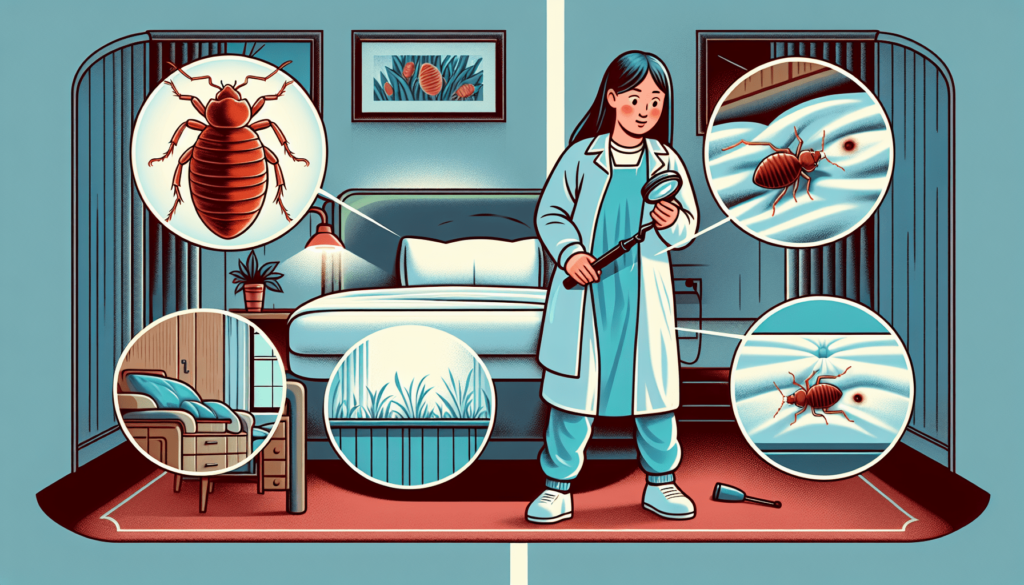
Tenant and Landlord Responsibilities
Bed bug infestations can lead to disputes between tenants and landlords regarding responsibility for extermination and associated costs. Understanding the legal implications and respective responsibilities can help navigate this situation:
Legal implications of bed bug infestations
- Landlord responsibilities: Landlords are generally responsible for maintaining a habitable and pest-free living environment for tenants. They must ensure prompt extermination of bed bugs if an infestation occurs.
- Tenant responsibilities: Tenants are responsible for maintaining cleanliness and notifying landlords of any signs of infestations promptly.
Understanding the roles of tenants and landlords in managing bed bug infestations
- Prompt reporting: Tenants should promptly report any signs of bed bug infestations to landlords to initiate the necessary actions.
- Access for inspection and treatment: Tenants must provide landlords or extermination professionals with access to the premises for inspection, treatment, and follow-up visits.
- Cooperation and communication: Both tenants and landlords should maintain open and clear communication throughout the process to ensure effective resolution of the infestation.
Knowing the legal responsibilities of both tenants and landlords can help facilitate a smoother process when dealing with bed bug infestations.
Bed Bug Life Cycle
Understanding the life cycle and reproductive habits of bed bugs is crucial for developing effective treatment strategies. Here’s what you need to know about the bed bug life cycle:
Understanding the lifespan and reproductive habits of bed bugs
- Eggs: A female bed bug can lay up to 200-250 eggs in her lifetime, typically laying 1-5 eggs per day. Eggs are small, whitish, and approximately 1 mm in length.
- Nymphs: Bed bug eggs hatch into nymphs, which go through five molting stages. Each nymph stage requires a blood meal to progress to the next stage.
- Adults: After completing the nymph stages, bed bugs reach adulthood and begin mating. Adult bed bugs can live up to a year or more under favorable conditions.
Implications of bed bug life cycle on effective treatment methods
- Targeting all life stages: Effective treatment methods must be able to target both adult bed bugs and their eggs to prevent the infestation from reoccurring.
- Repeat treatments: Since bed bug eggs are not affected by insecticides, multiple treatments are often required to eliminate newly hatched nymphs.
- Thoroughness and persistence: Combining multiple treatment methods, consistent monitoring, and follow-up visits are crucial to ensure complete eradication of bed bugs at all stages of their life cycle.
By understanding the bed bug life cycle, individuals can develop comprehensive treatment strategies to eradicate these pests effectively.
In conclusion, bed bug infestations can be a major source of distress, but proper identification, immediate action, and knowledge of effective treatment methods are crucial for successful management. Whether you choose to tackle the issue yourself or seek professional help, a proactive approach and adherence to preventive measures can significantly reduce the risk of bed bug infestations in the future. By understanding the health impacts, debunking common myths, and knowing your legal rights and responsibilities, you can effectively address bed bug infestations and ensure the well-being of your home and family.
Wikipedia link: Bed Bugs
Infographic: [Insert relevant infographic here]
Quiz:
- What are some common areas where bed bugs hide?
- How can you identify a bed bug infestation?
- When should you consider calling a professional exterminator?
- What are some preventive measures you can take to avoid bed bug infestations?
- What are the physical and psychological health impacts of bed bug infestations?
Please refer to the article for the correct answers.
